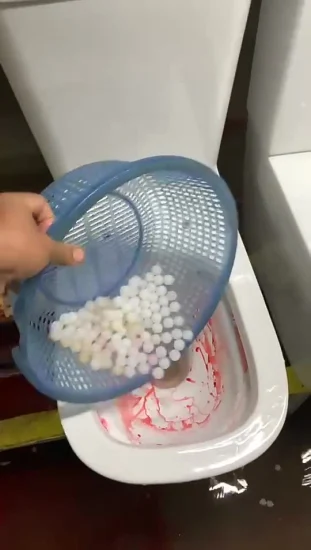Is it Allowed to Flush Food in the Toilet?
Is it Allowed to Flush Food in the Toilet?
Blog Article
On this page on the next paragraphs you might get additional brilliant material relating to Flushing Food Down the Toilet?.

Introduction
Many individuals are usually faced with the dilemma of what to do with food waste, particularly when it pertains to leftovers or scraps. One typical inquiry that emerges is whether it's fine to purge food down the toilet. In this short article, we'll explore the reasons why individuals could think about flushing food, the consequences of doing so, and alternate methods for appropriate disposal.
Reasons that people could think about purging food
Absence of recognition
Some individuals might not be aware of the prospective harm triggered by purging food down the commode. They might incorrectly think that it's a harmless practice.
Comfort
Purging food down the toilet may appear like a quick and simple service to getting rid of unwanted scraps, specifically when there's no neighboring trash can offered.
Negligence
Sometimes, individuals may simply choose to flush food out of large laziness, without taking into consideration the effects of their actions.
Consequences of flushing food down the commode
Ecological effect
Food waste that ends up in rivers can contribute to pollution and damage aquatic communities. Furthermore, the water utilized to flush food can strain water resources.
Pipes issues
Purging food can bring about clogged pipelines and drains pipes, creating costly plumbing fixings and troubles.
Kinds of food that need to not be flushed
Coarse foods
Foods with fibrous textures such as celery or corn husks can obtain entangled in pipes and create obstructions.
Starchy foods
Starchy foods like pasta and rice can take in water and swell, leading to blockages in pipelines.
Oils and fats
Greasy foods like bacon or food preparation oils must never ever be flushed down the toilet as they can strengthen and create obstructions.
Proper disposal techniques for food waste
Making use of a waste disposal unit
For homes furnished with waste disposal unit, food scraps can be ground up and flushed via the pipes system. Nevertheless, not all foods are suitable for disposal in this fashion.
Recycling
Certain food packaging products can be reused, decreasing waste and lessening ecological influence.
Composting
Composting is an eco-friendly means to take care of food waste. Organic materials can be composted and utilized to improve soil for horticulture.
The value of proper waste monitoring
Minimizing environmental harm
Proper waste monitoring techniques, such as composting and recycling, help decrease contamination and protect natural resources for future generations.
Securing pipes systems
By preventing the method of flushing food down the bathroom, homeowners can prevent expensive plumbing repair work and keep the integrity of their plumbing systems.
Final thought
Finally, while it may be tempting to flush food down the toilet for benefit, it's important to recognize the prospective repercussions of this activity. By embracing proper waste administration methods and taking care of food waste responsibly, individuals can add to healthier plumbing systems and a cleaner atmosphere for all.
THINK TWICE BEFORE FLUSHING FOOD DOWN YOUR TOILET IN FALLBROOK CA
Let’s be honest, we’re really supposed to be tossing rotten or leftover food in the compost bin or trash can. But many people like to place scraps of food down the drain of, say, their kitchen sink. That’s why the garbage disposal was invented: so we can continue to place certain foods down the drain without clogging our drain in the process. Smart.
But not all of us have the luxury of having a garbage disposal installed. So, you might continue to shove food down your sink drain anyway – or worse: you might flush them down your toilet! If you’re guilty of doing the latter, you’re going to want to stop, and here’s why:
Toilet Drains Aren’t Designed to Handle Food!
There’s your answer: food just doesn’t belong in your toilet. It may seem like your toilet drain is wider than the drains of your sinks, but truth be told, that isn’t actually the case. The narrower pipes of your toilet leave your plumbing at risk for clogging if you do happen to flush your food. In addition, food doesn’t break down as quickly that toilet paper and human waste do. In turn, this leaves your toilet at risk for a nasty clog.
Although a flush of a tiny pinch of food every now and then isn’t going to completely damage your toilet, there are certain foods that should absolutely not be flushed in your toilet at all. These include starchy foods like mashed potatoes, grains, hard pieces of food that are slow to break down, and fats and oils.
The latter categories of food are particularly problematic as they may harden, expand as they absorb water, break down slowly in your system, or generally create the perfect obstruction with their gelatinous composition. These are all things you don’t want in your plumbing system!
Experiencing a Toilet Clog?
Nobody’s perfect, and we all make mistakes. Sometimes one of the mistakes people make is flushing food down their toilet and later realizing that it wasn’t the best thing to do once they see that their toilet is now clogged. Uh-oh!

As an avid reader on What Can Happen If You Flush Food Down the Toilet?, I thought sharing that piece of content was really helpful. Are you aware of somebody else who is truly interested in the topic? Be sure promote it. I value your readership.
Call Today Report this page